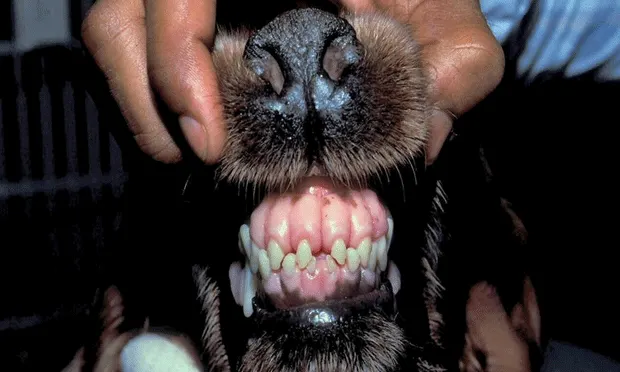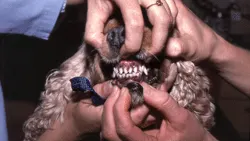Acromegaly

Above is the mouth of a 9-year-old intact female Irish setter showing gingival hyperplasia and wide interdental spaces-signs compatible with acromegaly. The dog also had ketoacidotic diabetes, which became evident when she entered the diestrous phase of her cycle.
On the left is an 8-year-old spayed female Cocker spaniel. She had received medroxyprogesterone acetate, which caused her acromegalic features as shown in the image (widened interdental spaces and maxillary widening). Her plasma growth hormone level was elevated at (16 µg/L, reference value < 6 µg/L).

Both dogs had acromegaly caused by excessive progestagen, which is characteristic of this endocrine disorder in dogs. The progestagen caused their mammary glands to produce excessive growth hormone. The etiology differs in cats and humans where acromegaly is usually caused by an anterior pituitary tumor The setter's problems were resolved with an ovariohysterectomy; the acromegaly disappeared and the diabetes went into remission. The spaniel's acromegalic features regressed as the accumulated progestagen was metabolized.
Related Articles:Insulin Resistance in a Diabetic CatPoorly Controlled Diabetes in a CatPituitary Apoplexy & Cushing's Disease